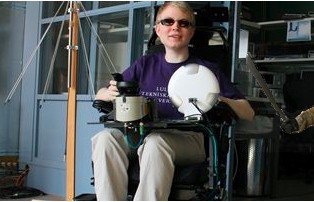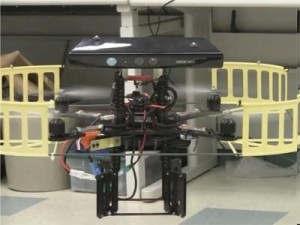Sweden’s Luleå University of Technology has developed a robotic wheelchair that does not look very technological or well-designed, but is definitely useful. The chair uses a laser sensor to generate a 3D map of its surroundings, that’s then transferred to an on-board haptic robot, allowing the bot to select up on and navigate its way around any obstacles.
The 3D map is transferred to the haptic robot so that a visually impaired wheelchair driver can feel obstacles such as open doors or approaching people and navigate around them.
The chair’s been tested by Daniel Innala Ahlmark, a prospective graduate student in the research project, and himself visually impaired. He tried it out in a busy corridor at the university with many open doors and passing people.
But there’s still a lot of work to do, says Hyyppä. The laser beam that sweeps in front of the wheelchair only works at a certain height, and can’t see things at all if they’re higher up or lower down.
The team now plans to develop a 3D camera that can do a full 3D measurement, and reckons it should have this up and running in around five years.
[ttjad keyword=”general”]





Spoke Guards are a great wheelchair gift idea for young wheelchair user. Every child below the age of 15 should absolutely have Spoke Guards on their wheelchair.